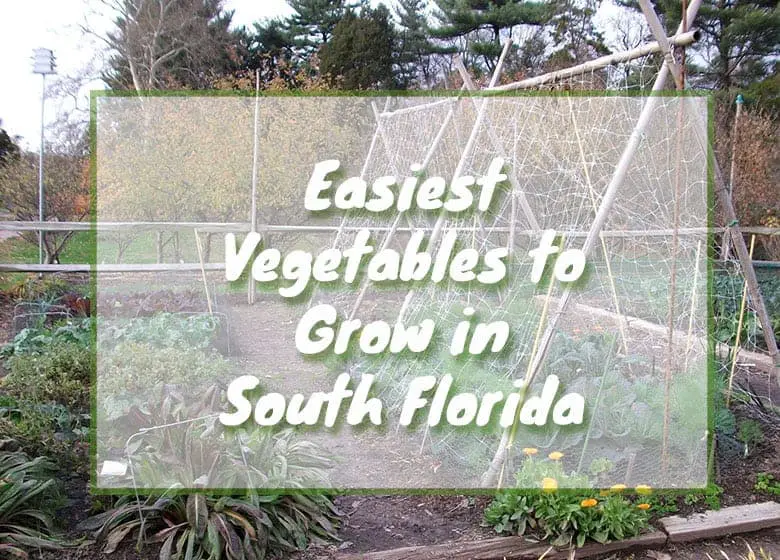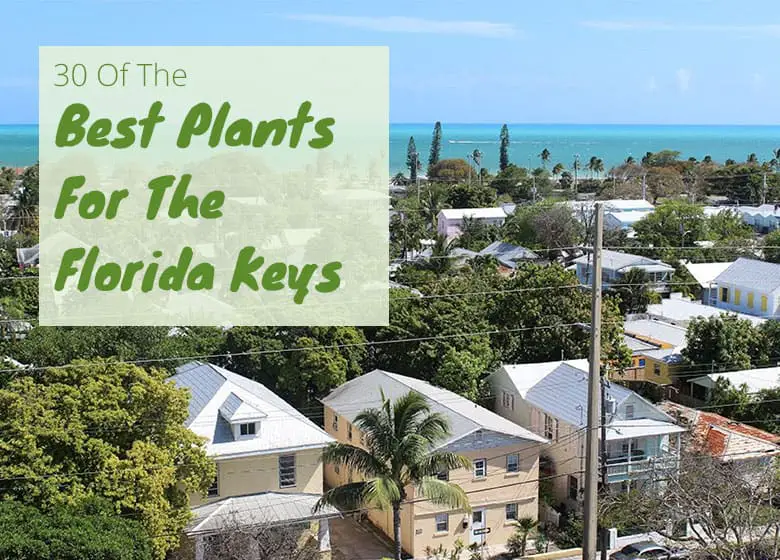
Best Plants for the Florida Keys
Located on Florida’s southern-most tip, the Keys offer residents a taste of sun, sand, salt, and year-round warm temperatures, as well as a vast and varied assortment of plants hardy to the region. Whether you’re looking for a groundcover, plants that flower, or something that grows directly on the oceanfront, there’s a wealth of hardy choices.
The best plants for the Florida keys are plants that can withstand the tropical and salty climate. Some good examples of plants that will thrive in the keys are Bay Cider, Bougainvillea, Gumbo Limbo, Pigeon Plum, Sea Oats, Crinumum Lilly, and Saw Palmetto.
The best plants for residences located in the Keys need to be able to withstand conditions that are consistently hot, sunny, dry and with a dash of salt spray mixed in.
Fortunately, plant choices are many and include evergreens, flowering, deciduous, natives, and those that attract pollinators.
Whatever your design style or area’s conditions, there’s a hardy plant fulfilling those needs that will thrive in your environment. Continue reading because we outline some popular plants hardy to growing in your Keys landscape.
Plant Choices & Characteristics
When considering what type of plants will grow best in your location of the Keys, it’s best to know the environmental conditions of the proposed area where the plants will be growing. Familiarizing yourself with the area’s soil and light conditions helps in selecting appropriate plants for the area.
Additionally, it’s good to familiarize yourself with the growing conditions the particular plant prefers for healthy growth.
For example, you don’t want to plant something that grows best in full sun in a site that receives little sunlight. Planting the right plant in the right place goes a long way in promoting years of maintenance-free and problem-free growth.
Bay Cedar
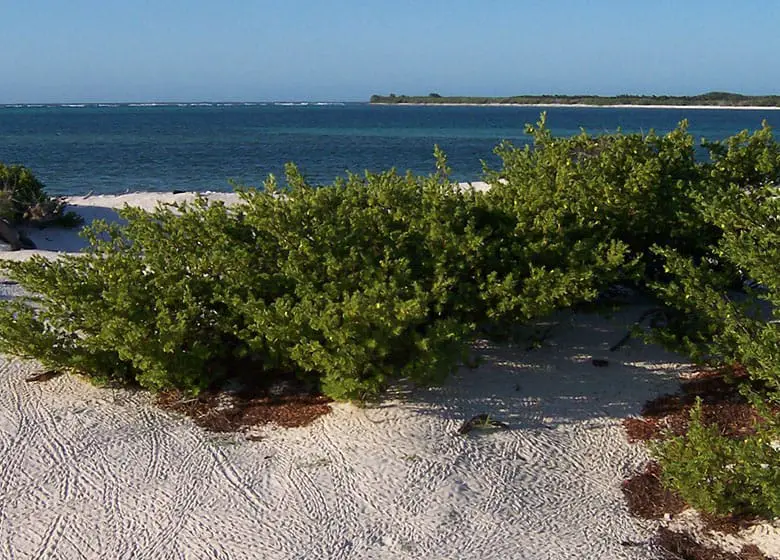
Native to South Florida, bay cedar (Suriana maritima) thrives in wind, salt, drought and heat, making it a perfect choice for landscapes in the Keys.
Performing as a large shrub or pruned into a tree, bay cedar grows anywhere from 5 to 20 feet tall generally with multiple trunks with attractive brown bark. The arching branches fill with small, fleshy, grayish-green leaves covered in downy.
Inconspicuous clusters of cup-shaped, yellow flowers bloom year-round that attract butterflies. Bay cedar works well as a hedge, mass planting, specimen, or used in beachfront landscapes.
It prefers a sunny site with soil that drains well.
Bougainvillea

Bougainvillea (Bougainvillea spp.) adds flamboyant color to landscapes with its colorful flower bracts in hues of purple, white, red, pink and yellow.
They fill the evergreen and shrubby vine’s canopy with a riot of color year-round. Depending on the variety, bougainvillea can easily reach heights of over 20 feet with a spread of 40 feet.
Its size makes it useful as a screen and its heavily thorn lined branches add to its use of adding privacy. For the best performance, grow in a sunny site in a variety of well-drained soil. Bougainvillea has a high tolerance to drought and grows well in coastal areas.
Bleeding Heart
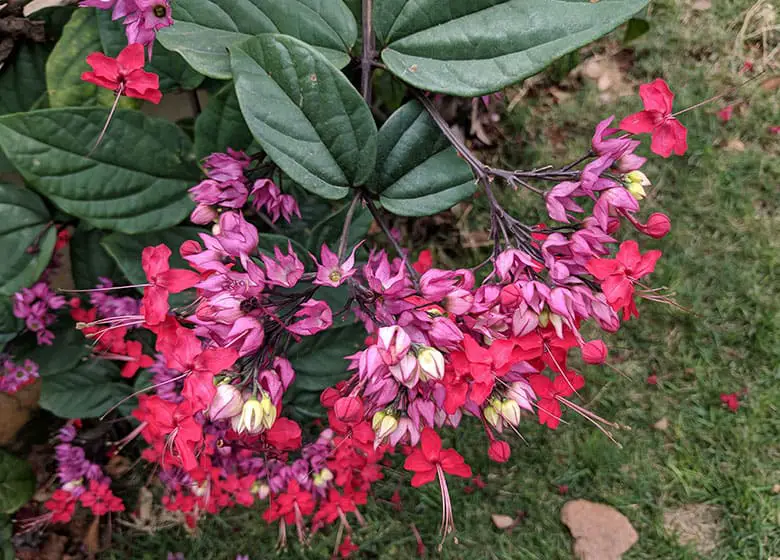
Bleeding heart vine (Clerodendrum thomsoniae) thrives in the warm conditions of the Keys, but requires a sheltered location for protection from winds.
The evergreen, sprawling vine makes an attractive addition used on an arbor, pergola, trellis or fence area located in full sun to partial shade. However, the more shade the plant gets, the fuller and denser the leaf coverage.
The glossy, dark green foliage makes an attractive contrast against the clusters of white flower bracts with red tips that bloom year-round. As the red flower falls from the cluster, the bracts change to an eye-catching purplish-pink color. For the best performance, grow in fertile soil kept moist through regular water applications.
Frangipani
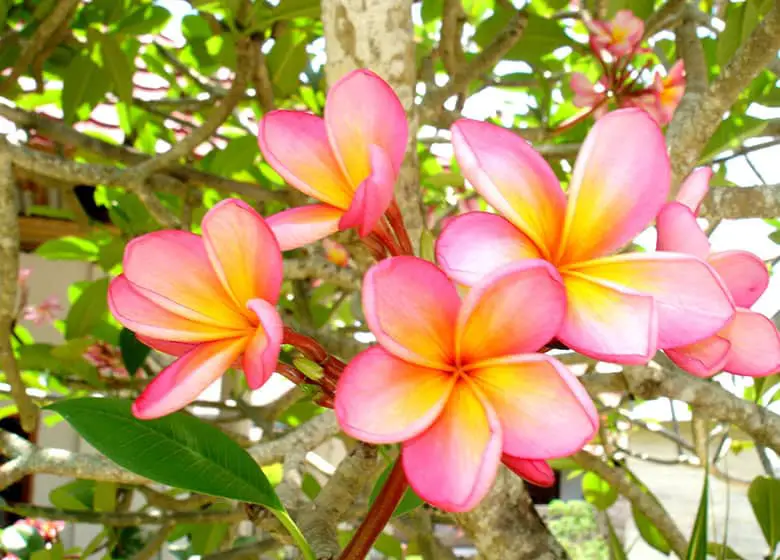
Those looking for a fragrant flowering small tree that gives a tropical appeal to coastal landscapes should look no further than frangipani (Plumeria spp.).
The sausage-like branches fill with foot long, green, deciduous leaves in late spring, followed by heavily fragrant blooms in shades of white, yellow, red, pink or a mix of several hues.
Trees have a high tolerance to salt and drought, growing best in full sun to partial shade and in a variety of well-drained soils. Frangipani makes an attractive addition to planters, used as a specimen or tropical gardens.
Gumbo Limbo
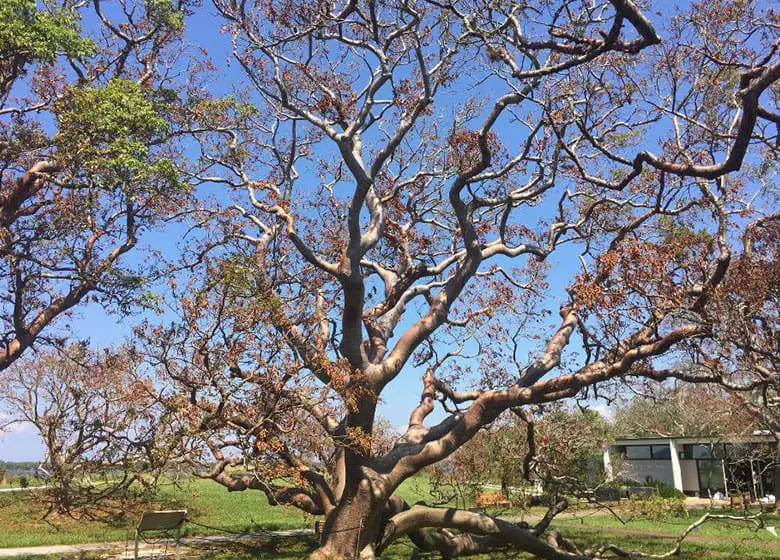
Native to the Keys and earning its nickname “The Tourist Tree” due to its red peeling bark, gumbo-limbo (Bursera simaruba) trees have a tough nature, standing up to salt, drought and strong winds.
The semi-evergreen tree quickly grows up to 40 feet tall with a similar spread, performing well in full sun to partial shade and in well-drained soils. Gumbo-limbo makes an attractive specimen, shade, or residential tree planted away from powerlines.
Jamaican Dogwood
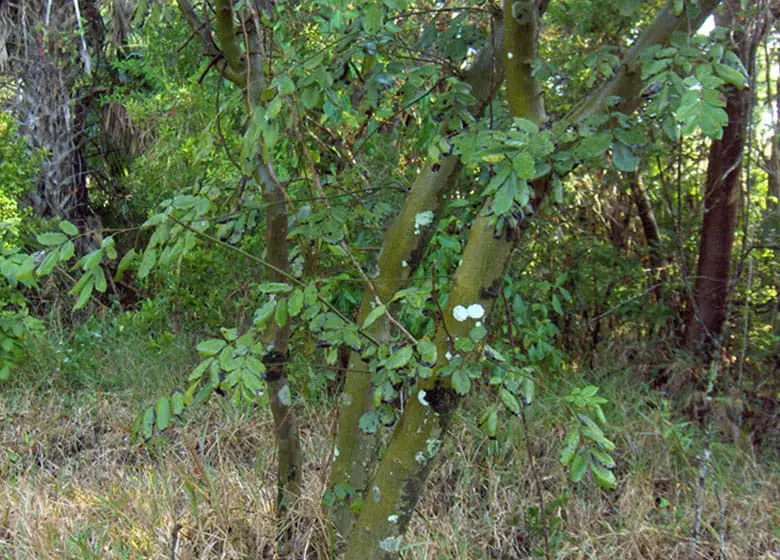
Jamaican dogwood (Piscidia piscipula) is a Keys native and forms into an attractive but underutilized residential tree. The deciduous tree averages around 45 feet tall and is covered in leaves topped in green with grayish-green undersides.
In late spring, pea-like clusters of white flowers tinged in red and pink bloom followed by long seedpods. The hardy tree is tolerant to salt, drought, and occasional brackish and seawater flooding. It grows best in full sun to partial shade and in well-drained soil.
West Indian Mahogany
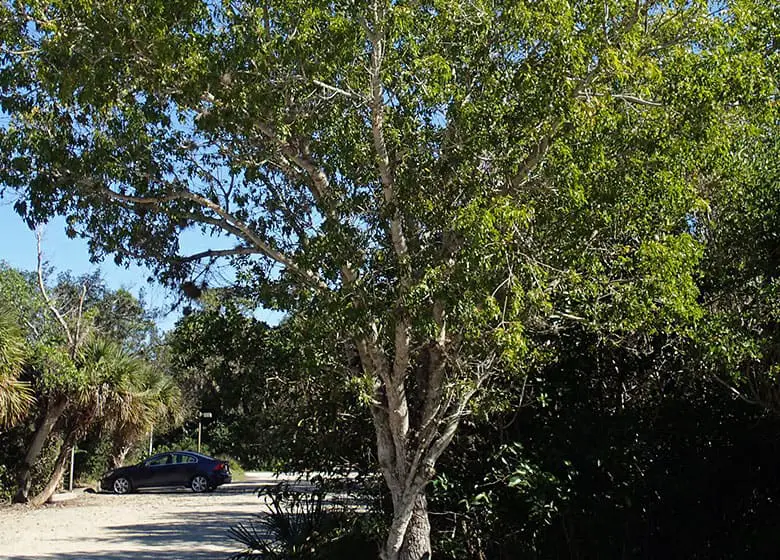
Keys native West Indian mahogany (Swietenia mahagoni) trees make fast-growing and attractive additions to landscapes used as a shade tree or for framing. However, its invasive roots mean the tree should be planted away from structures or walkways.
Averaging around 40 feet tall and wide, it forms a loose symmetrical canopy filled with 4-inch green, semi-deciduous leaves that cast light shade. The sturdy wood is wind-tolerant and the tree is drought- and salt-tolerant.
West Indian mahogany trees grow well in full sun to partial shade and in soils that drain well.
Buttonwood
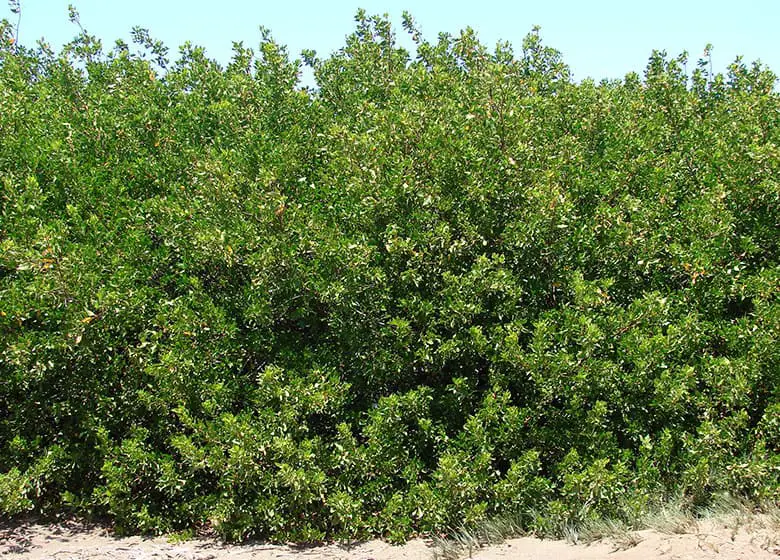
Buttonwood (Conocarpus erectus), also called green buttonwood, is native to the Keys and thrives in windy and salty coastal conditions.
With its low-branching habit with multiple trunks, buttonwood makes an attractive large shrub or evergreen tree filled with bluish-green foliage. In spring, inconspicuous greenish flower bloom, followed by small reddish-brown, cone-like fruits.
Growing around 30 feet tall and with a 20 to 30-foot spread, it works well as a hedge, planted by a patio or deck, or utilized as a medium-sized tree. Hardy buttonwood grows well in sandy to brackish soil located in full sun to partial shade.
Pigeon Plum
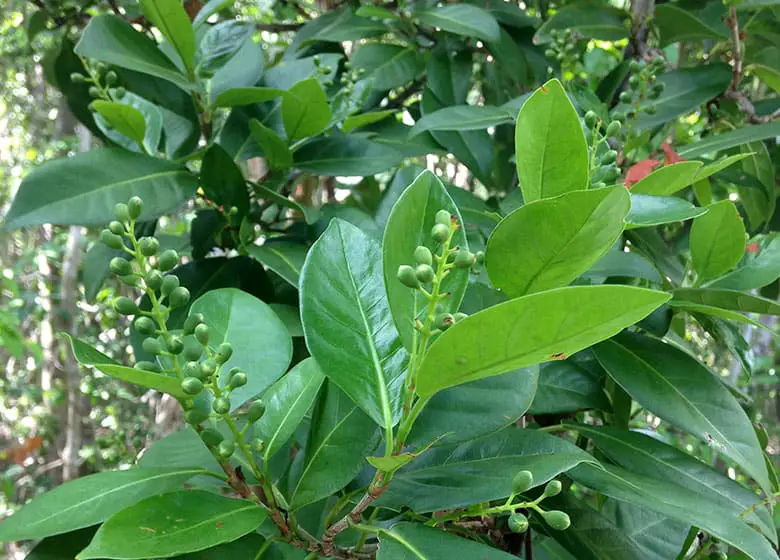
Native to the Keys, pigeon plum (Coccoloba diversifolia) forms into an attractive evergreen tree with a symmetrical canopy filled with dense, glossy evergreen foliage that is green once mature but emerges as red.
Adding to the tree’s attractiveness are the panicles of white spring flowers followed by the small edible fruits that are purple. Additionally, the grayish-brown bark peels from the trunk exposing a dark purple, adding even more color.
Growing 15 to 25 feet tall with a similar width, this hardy tree tolerates wind, drought, and salt, thriving in well-drained soils located in full sun to partial shade. Pigeon plum makes an eye-catching shade tree or specimen.
Fiddlewood
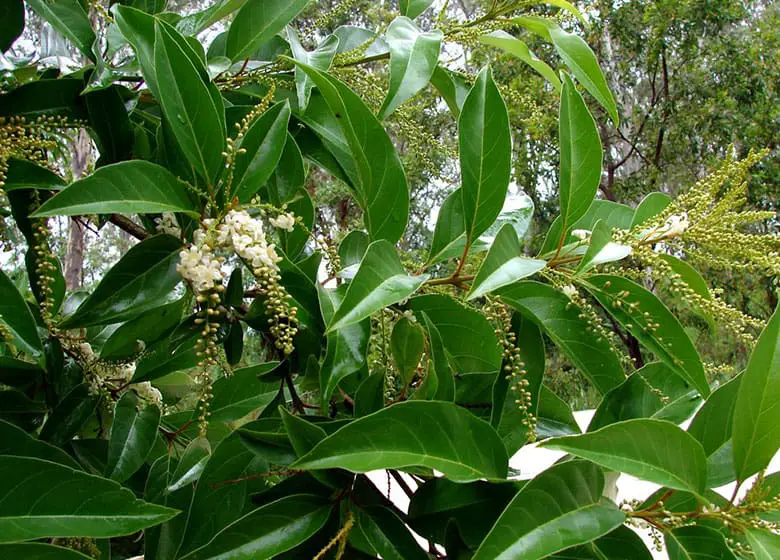
Fiddlewood (Citharexylum spinosum), a South Florida native, grows well as a tall shrub or tree, making it useful as a hedge, screen or planted near a patio or deck.
Growing 15 to 35 feet tall with a spread of 8 to 25 feet, fiddlewood fills with dark green to yellow evergreen leaves on top and lighter green on the bottom.
Clusters of fragrant, small white, and trumpet-shaped flowers bloom year-round, followed by small clusters of orange fruits eventually changing to black. This showy plant is heat-, salt- and drought-tolerant, thriving in well-drained soils and partial sun.
Satinleaf
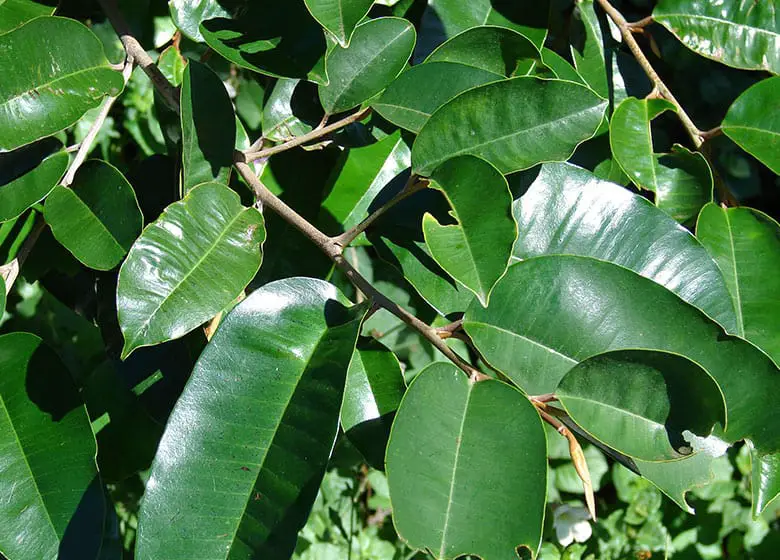
Native to Florida and the Keys, satinleaf (Chrysophyllum oliviforme) makes an attractive shade tree or specimen with its glossy evergreen foliage that’s green on top and bronze on the bottom covering the oval canopy.
Trees grow 35 to 45 feet tall with a spread of 18 to 25 feet. Satinleaf blooms off and on year-round producing white bell-shaped blooms followed by green olive-shaped fruits that change to black when ripe.
The tree grows best in fertile, well-drained soils kept moist and situated in partial shade to full sun. Satinleaf is heat-, salt- and drought-tolerant.
Pitch Apple
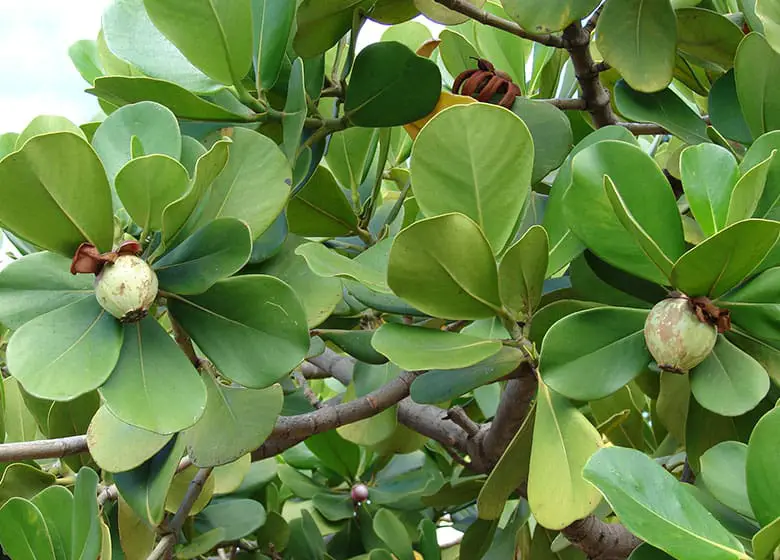
Pitch apple (Clusia rosea) earns its common name from the resinous material surrounding the red seeds, which was once used for caulking on boat seams.
The showy evergreen and Keys native grows 25 to 30 feet tall and spreads 15 to 25 feet, with its rounded canopy densely filled with large 6-inch leaves. Year-round but mainly in summer, showy 3-inch blooms form in colors of pink and white appearing at night and followed by small green fruits resembling rosehips.
With a high tolerance to salt and drought, pitch apple grows best in moist but well-drained soils located in full sun to partial shade. It is suitable used as a specimen, shade tree, in containers or a hedge or screening plant.
Passion Flower
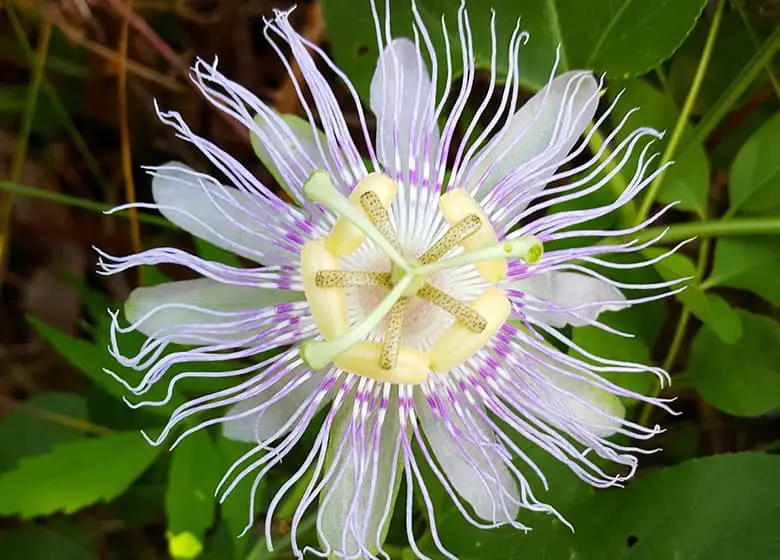
Although there are several species of passion flowers native to Florida, Maypop (Passiflora incarnate) is the showiest, producing exotic 3- to 5-inch blooms that are purple or lavender and with wavy fringes over the petals.
Flowers last for a day and green oval fruits form after the blooms fade(which are edible) but said to not taste too good.
The blooms attract a host of pollinators from bees, butterflies, moths, hummingbirds, bats and other insects Grow passion flower in a sunny site in fertile well-drained soil and utilize on a fence, trellis or arbor.
Locust Berry
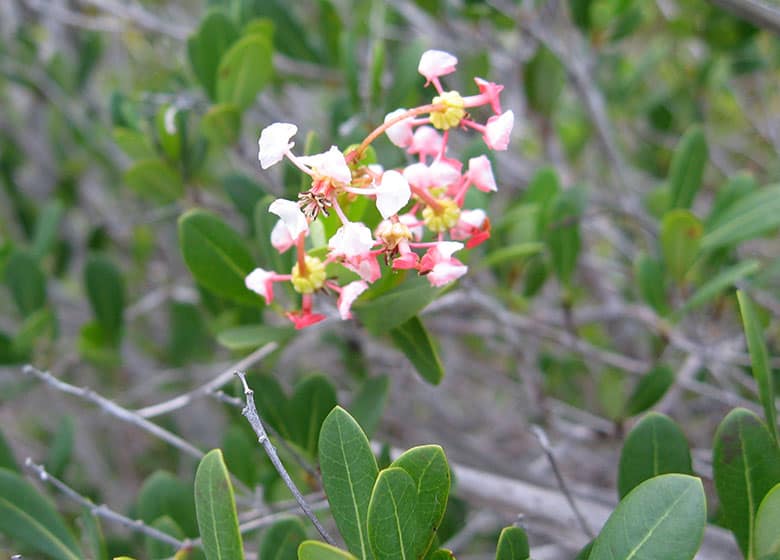
Locust berry (Byrsonima lucida) is a Florida native that is considered endangered. It has an irregular branching habit growing around a foot tall in sandy soils lacking nutrients but obtains a height of 8 feet in richer soils.
The evergreen shrub is covered in small green foliage and color-changing blooms form in springtime. The showy flower clusters start out as white, changing to pink and then a dark red and attract a host of beneficial pollinators.
Locust berry works well used in native or butterfly gardens, as well as a screen. It tolerates salt and drought and performs best in fertile soil located in partial sun or partial shade.
Lignumvitae
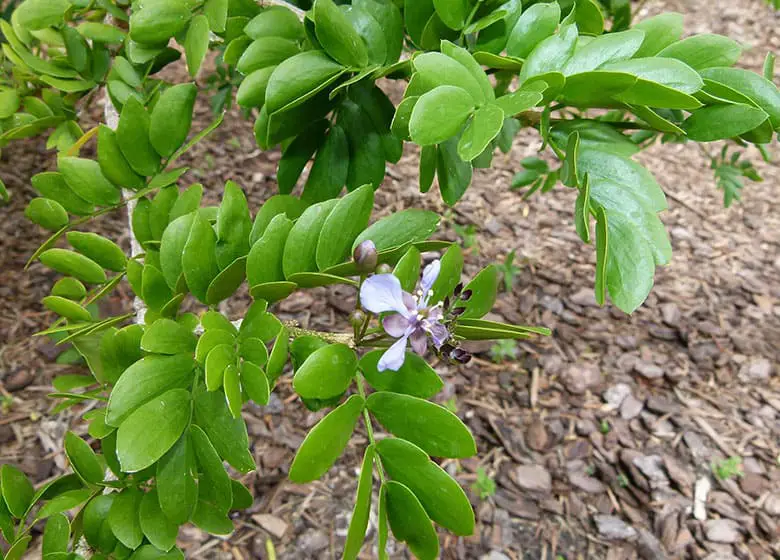
Native to the Keys, Lignumvitae (Guaiacum sanctum) is a quite showy slow-growing evergreen tree that only reaches a height of 8 to 12 feet with a similar spread.
The picturesque small tree delights with crooked multiple trunks, a rounded canopy filled with 2-inch long, leathery, dark green foliage, and a year-round display of showy flower clusters in a deep blue. Adding to the show, as the flowers fade they create a shimmering haze throughout the canopy as they changed to a lighter silvery-blue.
Lignumvitae is well-suited for containers, used around a patio or porch, as well as a specimen. For the best performance, grow this wind-, salt- and drought-tolerant native in full sun to partial shade and in well-drained soil.
Jamaican Caper
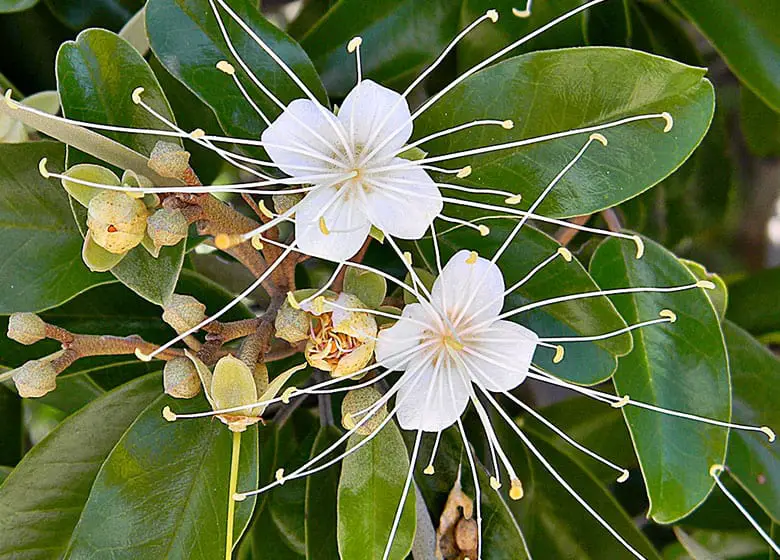
Jamaican caper (Capparis cynophallophora) is a native evergreen shrub that makes an attractive addition to butterfly and native gardens, or used as a backdrop to taller trees.
Plants take on a vase shape, slowly reaching a mature height and spread of 6 to 15 feet. Its unique glossy leaves are light green on top, with the bottoms lined in fine brown scales. As new foliage emerges, the leaves fold together giving them a bronze coloration.
In springtime, the shrub puts on a show with the blooming inflorescences containing clusters of up to 10 flowers. The showy blooms consist of 2-inch purple stamens, long white anthers, and white petals that take on a purple color throughout the day. Grow this drought-tolerant beauty in fertile, well-drained soil situated in full sun to moderate shade.
Cocoplum
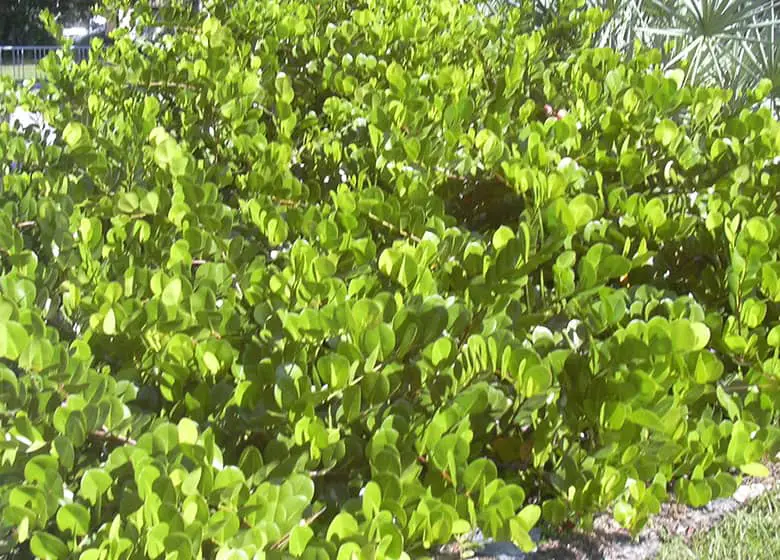
Native to South Florida, cocoplum (Chrysobalanus icaco) not only makes an attractive and hardy addition to coastal landscapes, it also produces edible fruit.
Growing around 15 feet tall and wide, round, glossy green leaves with maroon tips fill the dense canopy, making cocoplum suitable used as a hedge, screen, or windbreak. Additionally, it makes an attractive small specimen or accent tree, when the lower branches are pruned.
Small white blooms form into the edible plums and seeds, which start off pink and eventually ripen to purple. Grow this hardy wind-, salt- and drought-tolerant shrub in full sun to partial shade and in well-drained soils.
Golden Creeper
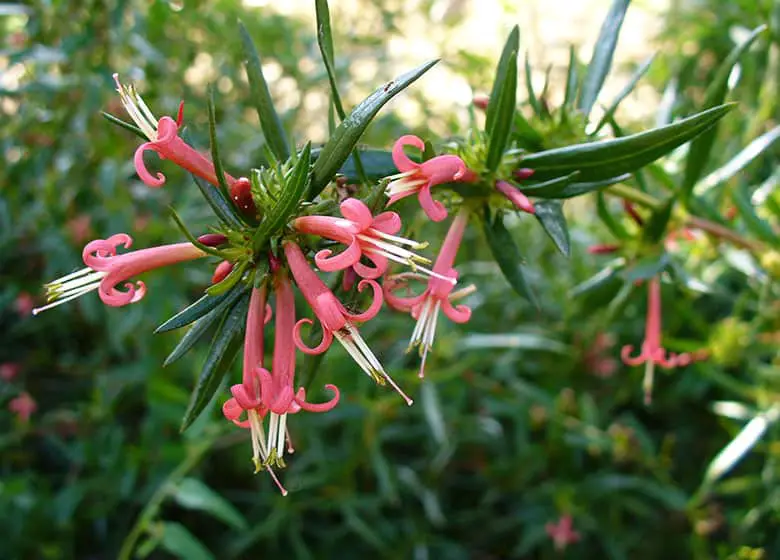
Golden creeper (Ernodea littoralis) is a South Florida native that thrives in hot, dry, and salty conditions, making it the perfect choice for planting directly on the dunes, oceanfront landscapes, or along brackish waters.
The succulent groundcover grows 1 o 3 feet tall, developing into spreading mounds filled with red succulent stems covered in tiny green leaves. It blooms year-round in pinkish-white, tubular flowers that are unnoticeable. Golden creeper grows best in a sunny location with sandy soil.
The tough and low-maintenance evergreen tolerates salt, heat, and drought and in fact, will fail to thrive and possibly die if irrigated too much.
Blanket Flower
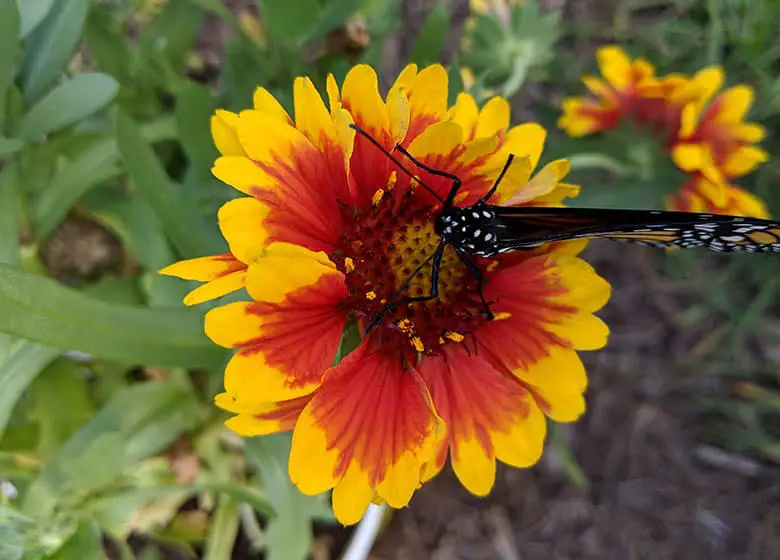
Blanket flower (Gaillardia pulchella), a Florida native guarantees a blast of brilliant eye-catching color whether used in containers or the garden. This salt- and heat-tolerant perennial fills with 2- to 3-inch daisy-like flowers with frilly petals and large centers in hues of orange, red, yellow, copper scarlet, and rose-purple.
Mounds grow over a foot tall and wide, making the plant a good border, filler, or ground cover plant. The flowers attract butterflies and spent seeds readily send up volunteers. Colorful and cheery blanket flower is a welcome addition to wildflower, native, seaside, and pollinator gardens. Grow in a sunny location in soil that drains well.
Railroad Vine
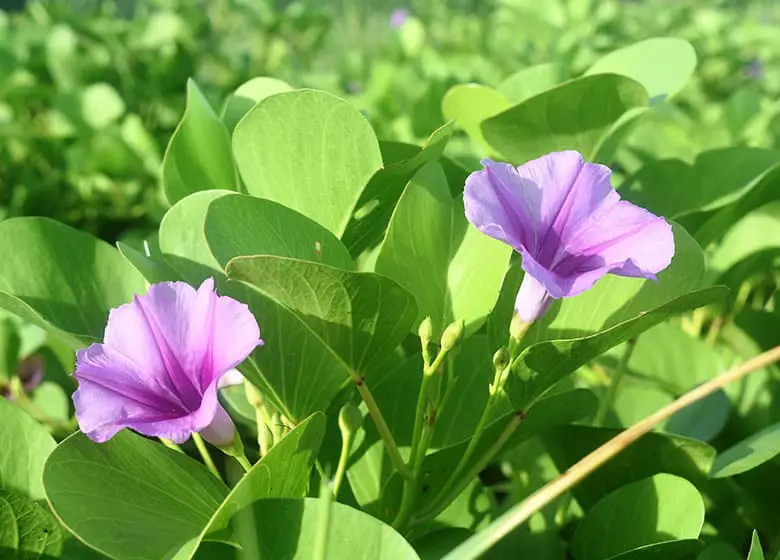
A Florida native and relative of morning glories, railroad vine (Ipomoea pes-caprae) is a hardy and attractive groundcover sporting long stems of bright green, kidney-shaped foliage and a year-round display of purple to pink flowers.
Plants grow around 16 inches tall and their preference to sandy soils and full sun, make them suitable used on dunes or coastal gardens. Railroad vine has a high tolerance to drought, heat, and salt spray and requires little maintenance to thrive and perform well.
Sea Purslane
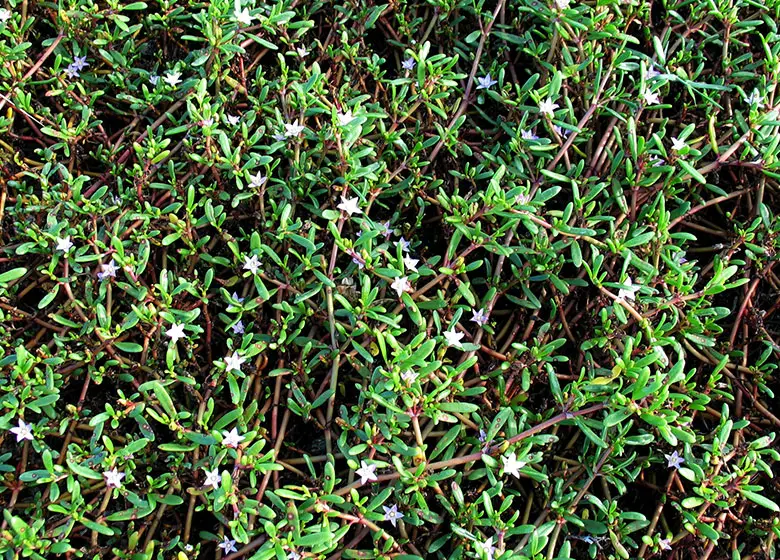
Not only is sea purslane (Sesuvium portulacastrum) a Florida native thriving in salty coastal conditions, but as an added bonus it’s also edible.
The herbaceous perennial produces mats of dense growth filled with small fleshy leaves and growing around 1 foot tall. Year-round, small purple flowers cover plants, adding to its appeal.
Sea purslane has a high tolerance to drought and salty conditions, preferring a sandy site located in full sun. It’s tolerance to salt makes it a good plant to use directly on the dunes or in coastal gardens.
Sea Oats
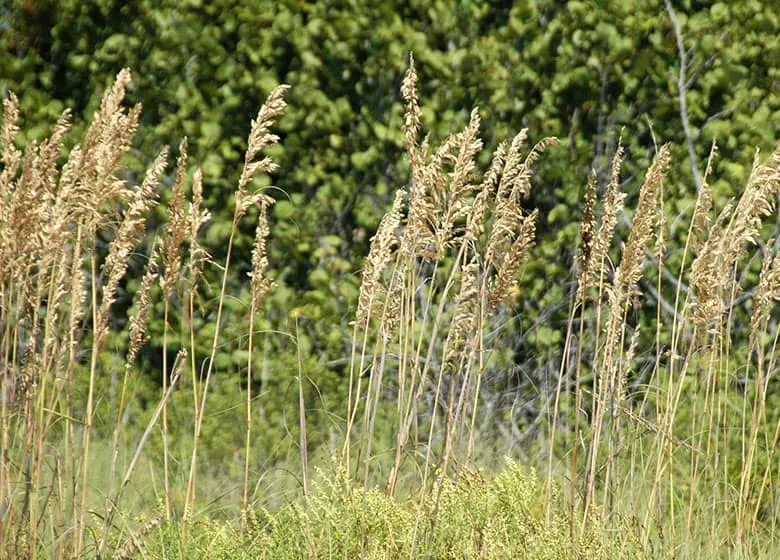
Sea oats (Uniola paniculata) are an ornamental grass native to Florida and although now endangered, once blanketed the coastal shores along the state.
They form attractive stands of clumping stems around 5 feet tall with oat-like flowers covering the ends that are especially appealing blowing in the wind. Sea oats are heat-, drought- and salt-tolerant, growing right up to the ocean’s shoreline.
They grow well in sandy soil located in full sun and work well planted directly along the dune or in coastal gardens.
Lantana
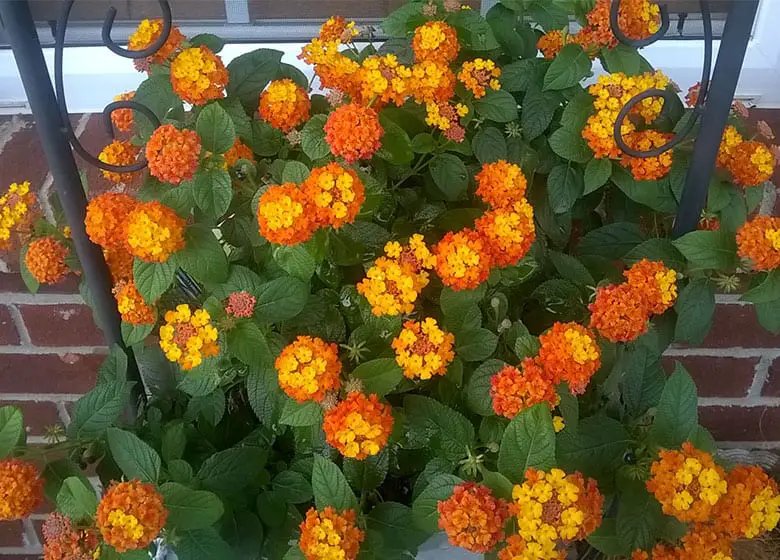
For a low-maintenance, easy to grow, year-round native bloomer that is both salt-, heat- and drought-tolerant, you cannot go wrong growing lantana (Lantana involucrate).
Perennial plants produce clusters of small flowers that are multi-colored, yellow or orange-red. Toothed green foliage is velvety and the shrub grows several feet tall and wide.
Plants attract butterflies and work well used in containers, hanging baskets, borders, filler plants or mixed gardens. Grow in well-drained soil in full sun.
Blue Porterweed
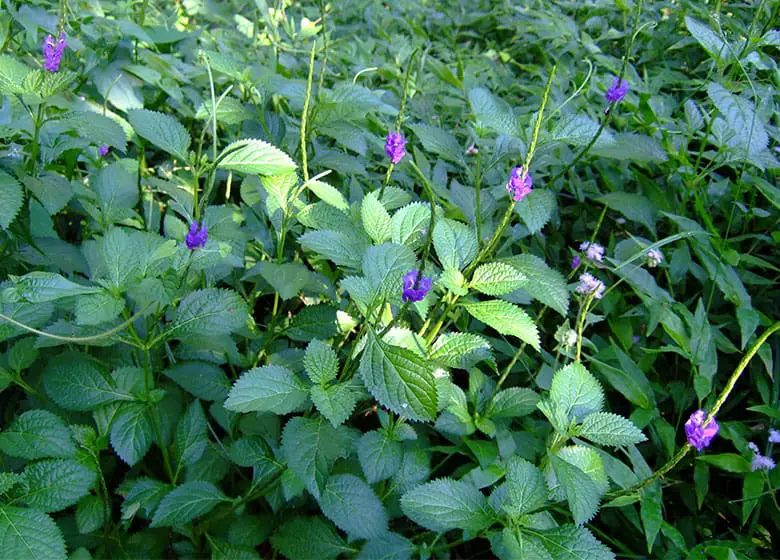
Native to South Florida, blue porterweed (Stachytarpheta jamaicensis) is a small perennial shrub that produces a year-round display of blue flowers born on long spikes attached to the ends of the shrub’s stems.
The dark green, serrated, evergreen foliage highlights the attractive masses of blooms. Various beneficial pollinators are attracted to the flowers. Blue porterweed grows 4 to 8 feet tall and wide with a round habit and makes an attractive hedge, used on borders, or in butterfly gardens.
The heat-, salt- and drought-tolerant plant thrives in full sun to partial shade and in well-drained soils.
Crinum Lily
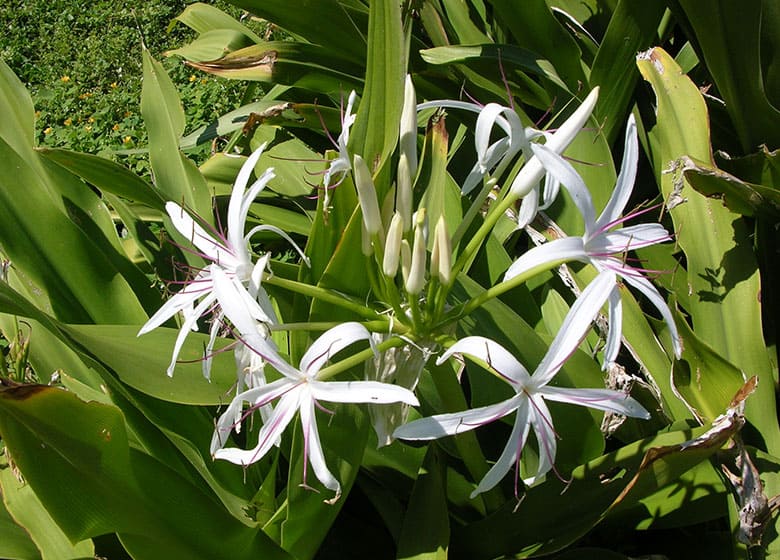
There are dozens of different varieties of crinum lilies (Crinum spp.) that grow well in landscapes located in the Keys, taking the heat, drought and salt without skipping a beat. Plants range in size from 13 inches to around 6 feet tall, producing 2 to 5-foot high flower stalks holding blooms in shades of pink, white, dark rose or even striped.
Depending on the variety, the long strap-like leaves are green or purple. They work well planted in mass or along borders, with larger types suitable used as specimens. Crinum lilies thrive in well-drained soils and situated in full sun to partial shade.
Plants are drought-tolerant, although they will appreciate a drink of water from time to time and have a moderate tolerance to salt spray.
Dune Sunflower
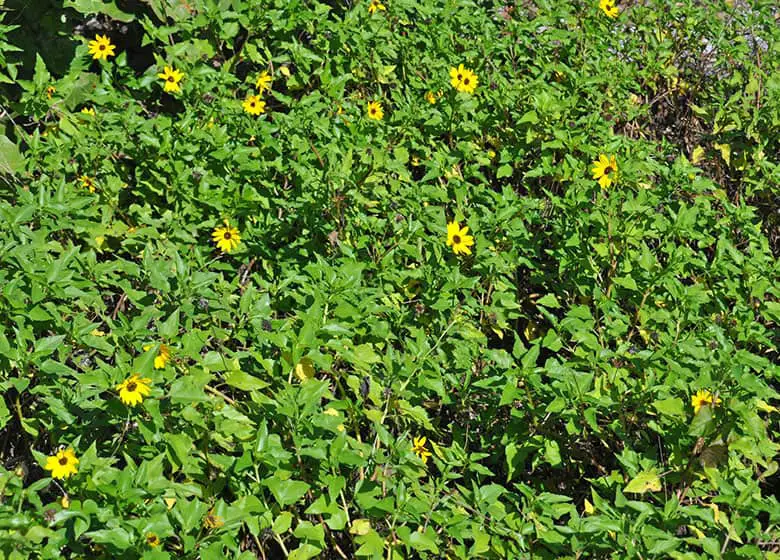
Dune sunflower (Helianthus debilis), also called beach sunflower, is a Florida native that thrives in sun, heat and salty conditions found directly along the oceanfront. It brings a cheery and colorful appeal to gardens and direct coastal landscapes with its year-round display of yellow flowers with dark maroon centers.
Plants have a dense spreading habit, forming mounds up to 4 feet tall and wide. The bright yellow flowers are accented by the dark green and serrated, glossy green leaves.
It makes an attractive groundcover and is hardy planted on the dunes. Dune sunflower is salt-, heat- and drought-tolerant, growing best in well-drained soil and in a sunny location.
Coontie Palm
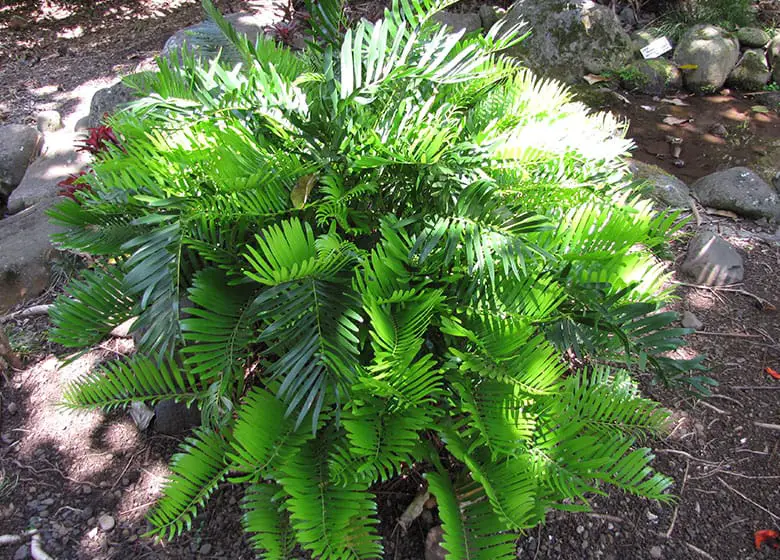
The only cycad native to Florida, coontie palm (Zamia floridana) is both tolerant to salt and drought, making it a good choice for landscapes in the Keys. The cycad grows slowly, reaching a mature height of 2 to 4 feet, with a spread of 3 to 5 feet.
The stiff, palm-like leaves grow 4 to 8 inches long and are evergreen, bringing a green appeal to gardens year-round. Although underutilized in landscapes, coontie palms make attractive additions to borders, mixed tropical gardens, shade gardens, used as specimens or accent plants.
It also grows well in containers and as an indoor plant. The native thrives in partial sun to partial shade and in soils that drain well.
Florida Thatch Palm
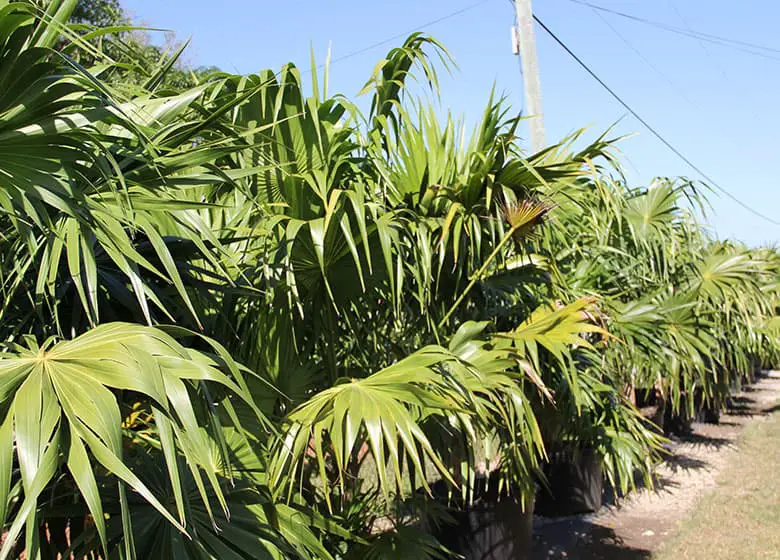
Native to South Florida, Florida thatch palms (Thrinax radiata) thrive in the warm coastal environment found in the Keys.
The slow-growing palm matures at a height of 15 to 20 feet, covered in green fan-like fronds. It’s sure to add a tropical feeling wherever used in the landscape, working well as a specimen, accent plant or in mixed tropical gardens. Thatch palms are drought-, heat- and salt-tolerant, growing best in full sun to partial shade and in soil that drains well.
Silver Palm
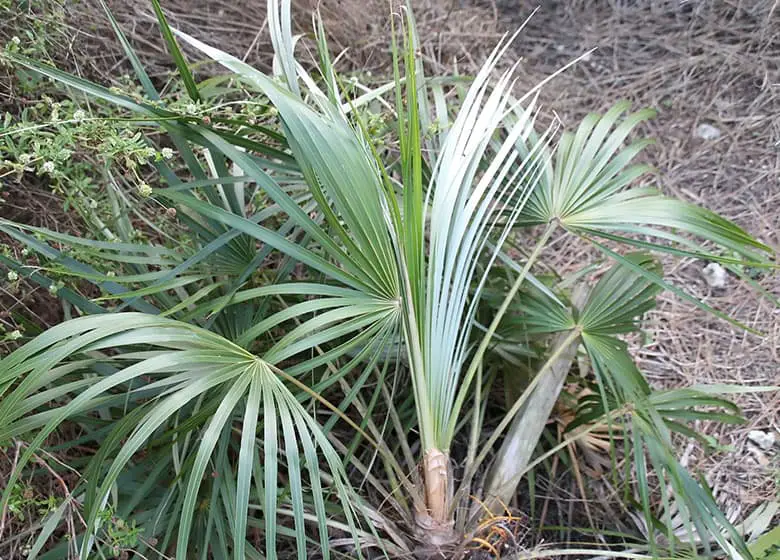
Silver palm (Coccothrinax argentata) is a Keys native and considered a threatened species. The slow-growing palm is tolerant to drought, salt spray, heat and the windy conditions the area offers.
Although growing to a mature height of 20 feet, the palm is usually seen at around 15 feet tall. The fan-like leaves are deeply divided and green on top, with the bottom side a silvery-white or coppery color, thus its common name. The edible fruit ripens to black and is a delight to a variety of wildlife.
Its attractive ornamental features make it work well as an accent plant, specimen or utilized in tropical gardens. Silver palms thrive in well-drained soils located in full sun to partial shade.
Saw Palmetto
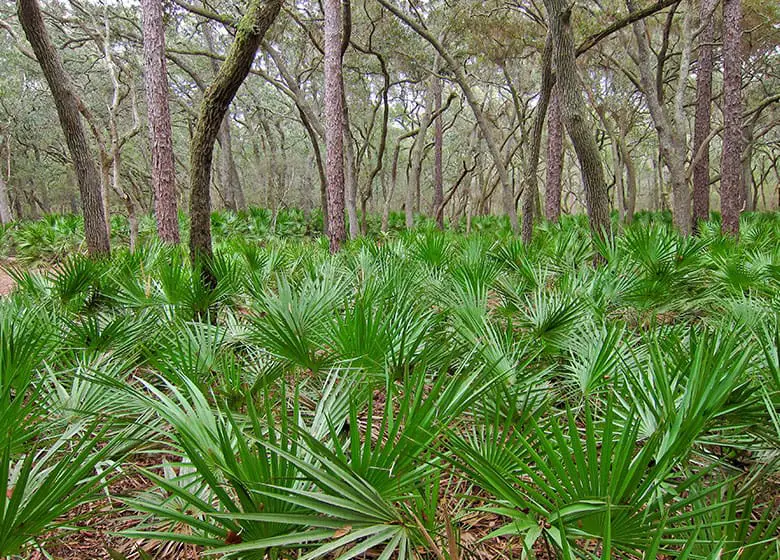
Native to Florida, saw palmetto (Serenoa repens) makes a sturdy and attractive addition used in the natural or seaside landscape. The low-growing palm is tolerant of winds, salt spray, sun, and heat and drought conditions and grows 5 to 10 feet tall with a similar spread.
Saw palmettos produce multiple trunks that crawl across the ground, making it a dense groundcover or screening plant. The fan-like leaves are either green or bluish-green and the small, yellow and fragrant flowers are used to make honey, attracting beneficial pollinators. The palm grows in well-drained soils located in full sun to partial shade.
You Might Also Be Interested In:
